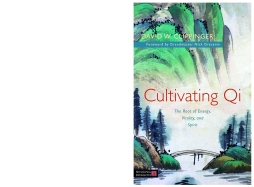
Additional Information
Book Details
Abstract
How can Qi offer you the means, tools and will to live a life of balance?
Explaining what Qi is, where it comes from, how we use it, and how we can cultivate it in order to achieve wholeness and balance, this much-needed book combines knowledge and practice to explore all aspects of Qi, including its modern, everyday implications. The book not only covers the history of Qi, but also demystifies the vital philosophies and practices surrounding it. Filled with valuable information on how to recognise and cultivate Qi in order to increase your energetic capacity and return to a more efficient physical, emotional, and psychological state, it also illustrates Qi's central importance in meditation, Taiji, Qigong, and other Internal Arts practices that focus upon its vitality.
The author also offers instruction on a number of methods for opening the energy gates of the body to cultivate Qi.
This book succinctly pulls together the many threads about qi, and weaves a brocade valuable to the beginner and advanced practitioner alike.
Deng Ming-Dao, author of Scholar Warrior and 365 Tao
David W. Clippinger, PhD, is the Director of Still Mountain T'ai Chi and Chi Kung, Pittsburgh PA, as well as the Resident Buddhist Priest of One Pine Meditation Center. He was an Associate Professor at Penn State University before shifting his attention to teaching T'ai Chi Chuan (Taijiquan) and Chi Kung (Qigong) at his T'ai Chi and Chi Kung school, Still Mountain. David lives in Pittsburgh with his wife and two children.
Table of Contents
| Section Title | Page | Action | Price |
|---|---|---|---|
| Cultivating Qi: The Root of Energy, Vitality, and Spirit by David W. Clippinger | 3 | ||
| Foreword | 9 | ||
| Acknowledgments | 11 | ||
| Introduction | 15 | ||
| Chapter 1 - The Will to Qi | 21 | ||
| Chapter 2 - Returning to the Source: The History of Energy and Its Uses | 41 | ||
| Chapter 3 - Opening the Energy Gates of the Body | 74 | ||
| Chapter 4 - Powered by Breath | 108 | ||
| Chapter 5 - Cultivating Mind and Heart | 137 | ||
| Chapter 6 - The Elements of Daily Practice | 168 | ||
| Endnotes | 201 | ||
| References | 204 | ||
| Blank Page |
